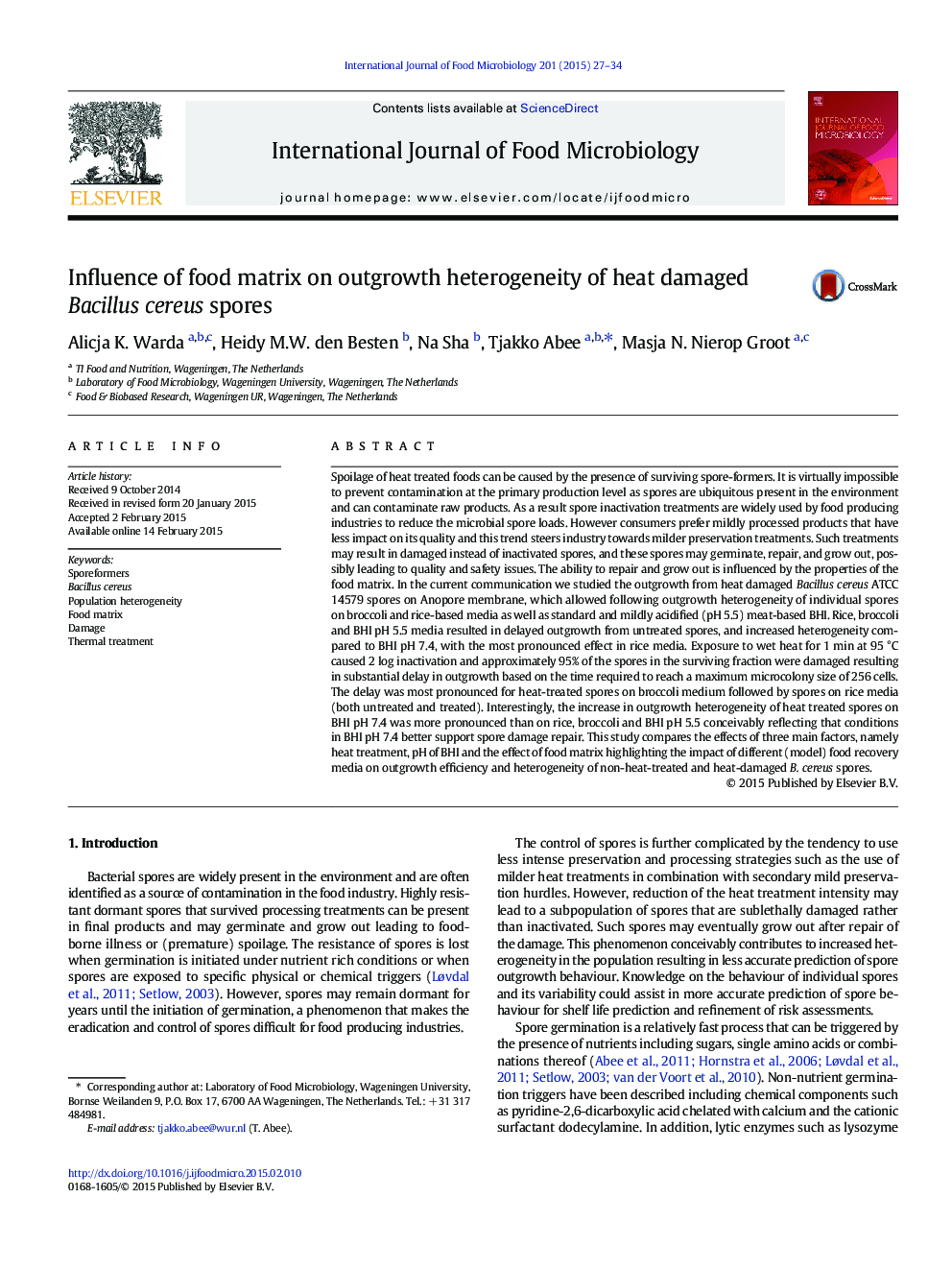| کد مقاله | کد نشریه | سال انتشار | مقاله انگلیسی | نسخه تمام متن |
|---|---|---|---|---|
| 4366580 | 1616582 | 2015 | 8 صفحه PDF | دانلود رایگان |
• The effect of rice, broccoli and BHI pH 5.5 on outgrowth of B. cereus spores was studied.
• (Food) Matrix composition affects spore outgrowth heterogeneity.
• Microcolony morphology is affected by (food) matrix composition.
• Heat damaged spores showed outgrowth delay and increased heterogeneity in outgrowth.
• The impact of heat damage on outgrowth heterogeneity was most pronounced in BHI pH 7.4.
Spoilage of heat treated foods can be caused by the presence of surviving spore-formers. It is virtually impossible to prevent contamination at the primary production level as spores are ubiquitous present in the environment and can contaminate raw products. As a result spore inactivation treatments are widely used by food producing industries to reduce the microbial spore loads. However consumers prefer mildly processed products that have less impact on its quality and this trend steers industry towards milder preservation treatments. Such treatments may result in damaged instead of inactivated spores, and these spores may germinate, repair, and grow out, possibly leading to quality and safety issues. The ability to repair and grow out is influenced by the properties of the food matrix. In the current communication we studied the outgrowth from heat damaged Bacillus cereus ATCC 14579 spores on Anopore membrane, which allowed following outgrowth heterogeneity of individual spores on broccoli and rice-based media as well as standard and mildly acidified (pH 5.5) meat-based BHI. Rice, broccoli and BHI pH 5.5 media resulted in delayed outgrowth from untreated spores, and increased heterogeneity compared to BHI pH 7.4, with the most pronounced effect in rice media. Exposure to wet heat for 1 min at 95 °C caused 2 log inactivation and approximately 95% of the spores in the surviving fraction were damaged resulting in substantial delay in outgrowth based on the time required to reach a maximum microcolony size of 256 cells. The delay was most pronounced for heat-treated spores on broccoli medium followed by spores on rice media (both untreated and treated). Interestingly, the increase in outgrowth heterogeneity of heat treated spores on BHI pH 7.4 was more pronounced than on rice, broccoli and BHI pH 5.5 conceivably reflecting that conditions in BHI pH 7.4 better support spore damage repair. This study compares the effects of three main factors, namely heat treatment, pH of BHI and the effect of food matrix highlighting the impact of different (model) food recovery media on outgrowth efficiency and heterogeneity of non-heat-treated and heat-damaged B. cereus spores.
Journal: International Journal of Food Microbiology - Volume 201, 18 May 2015, Pages 27–34
